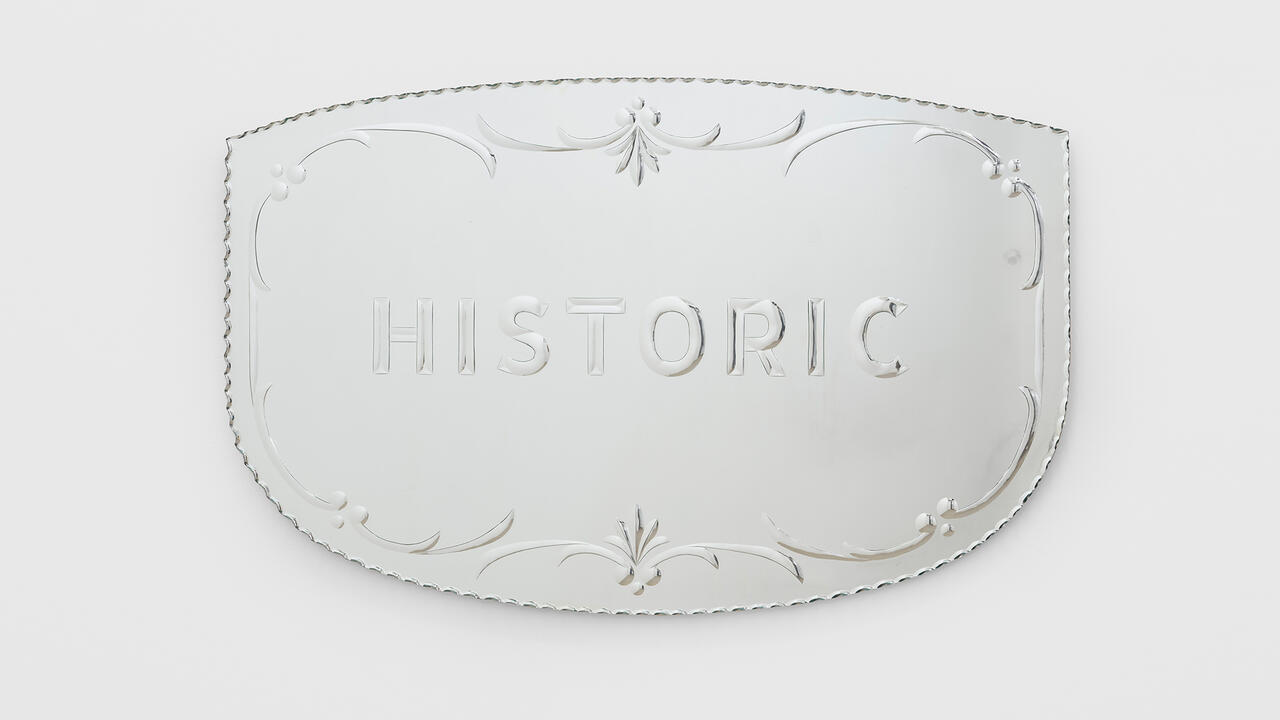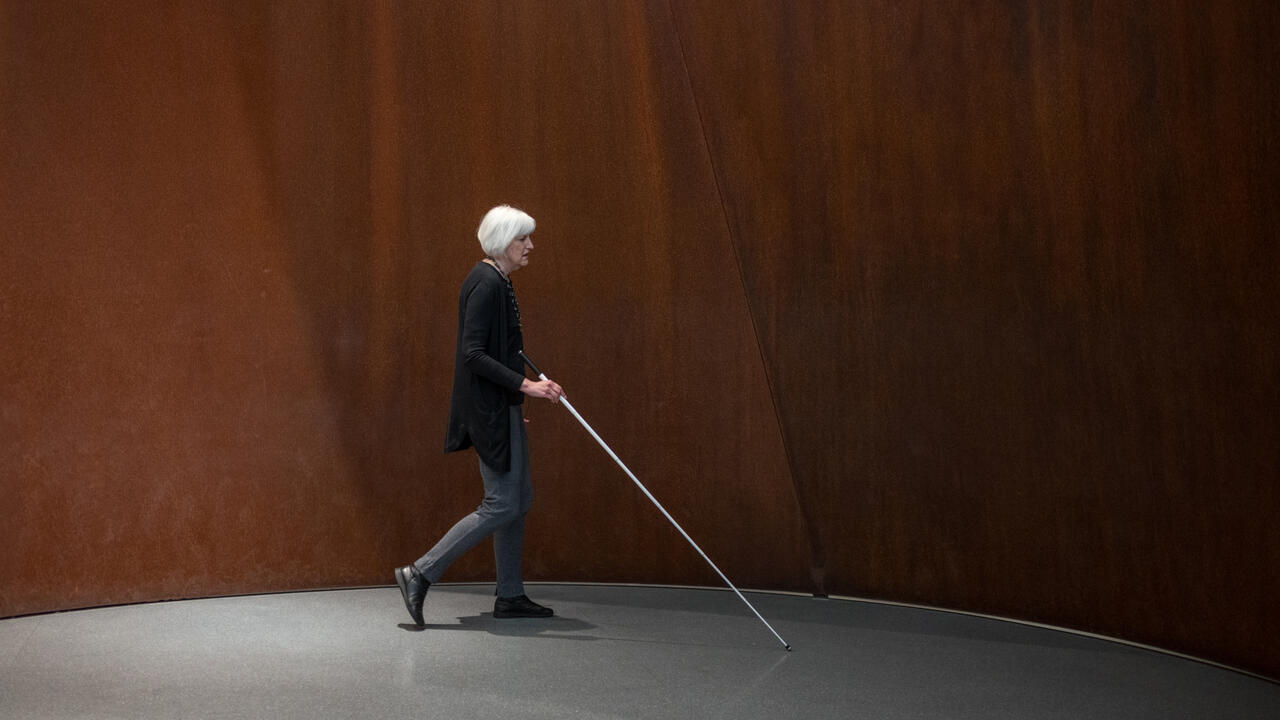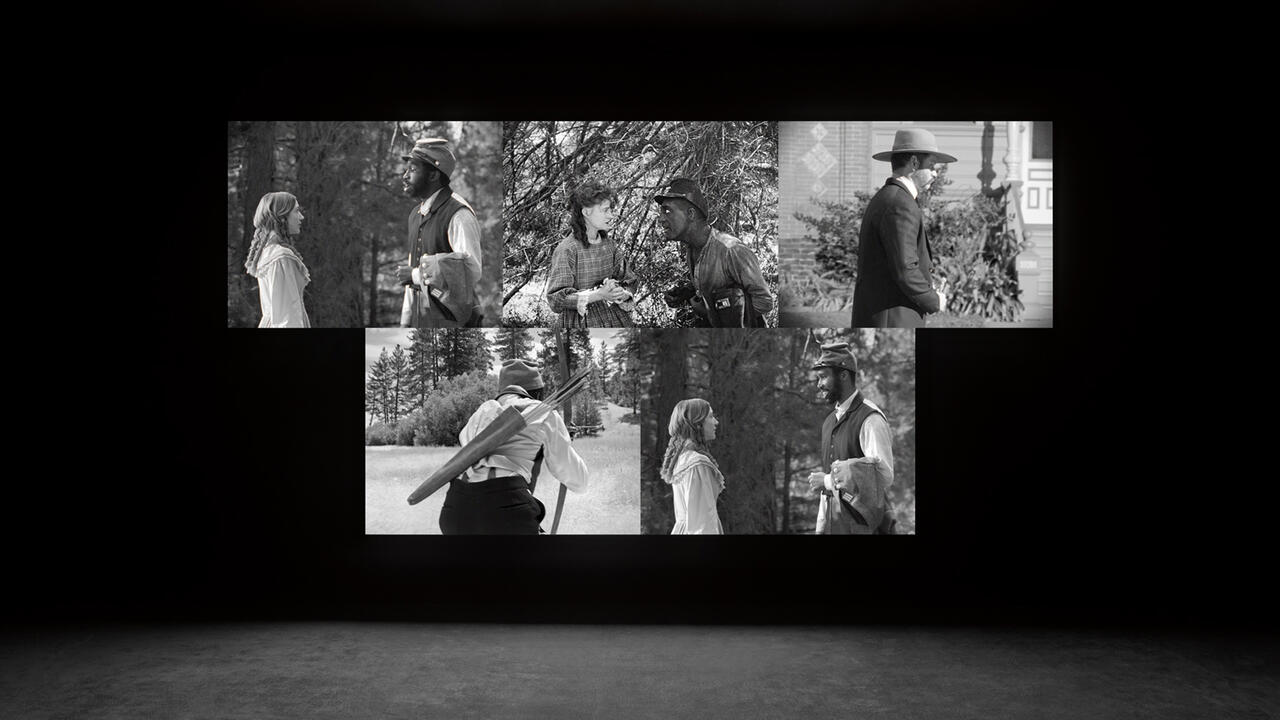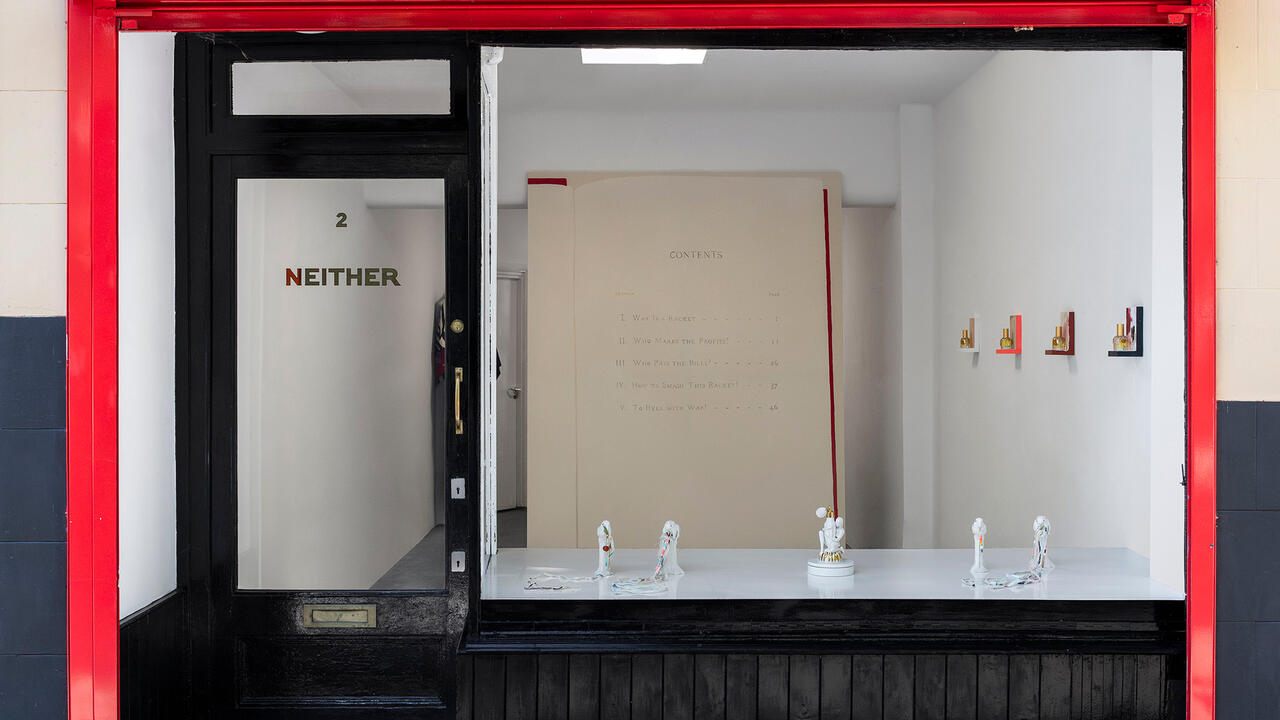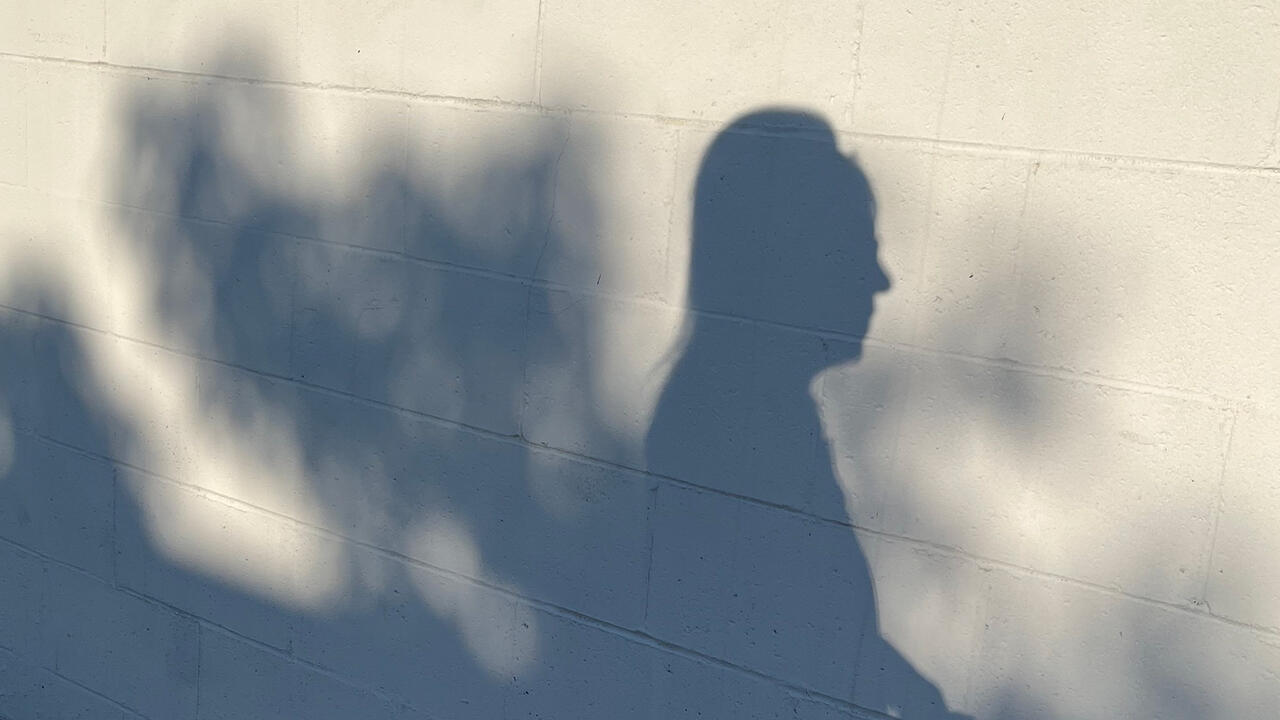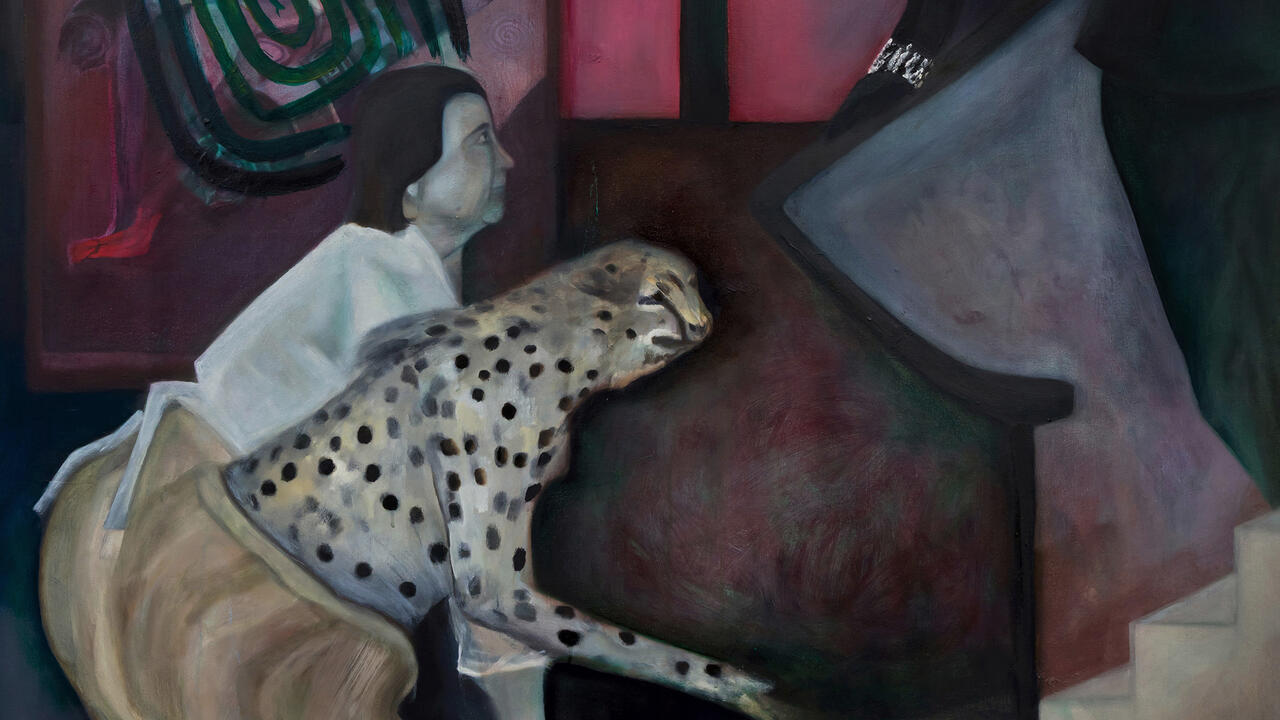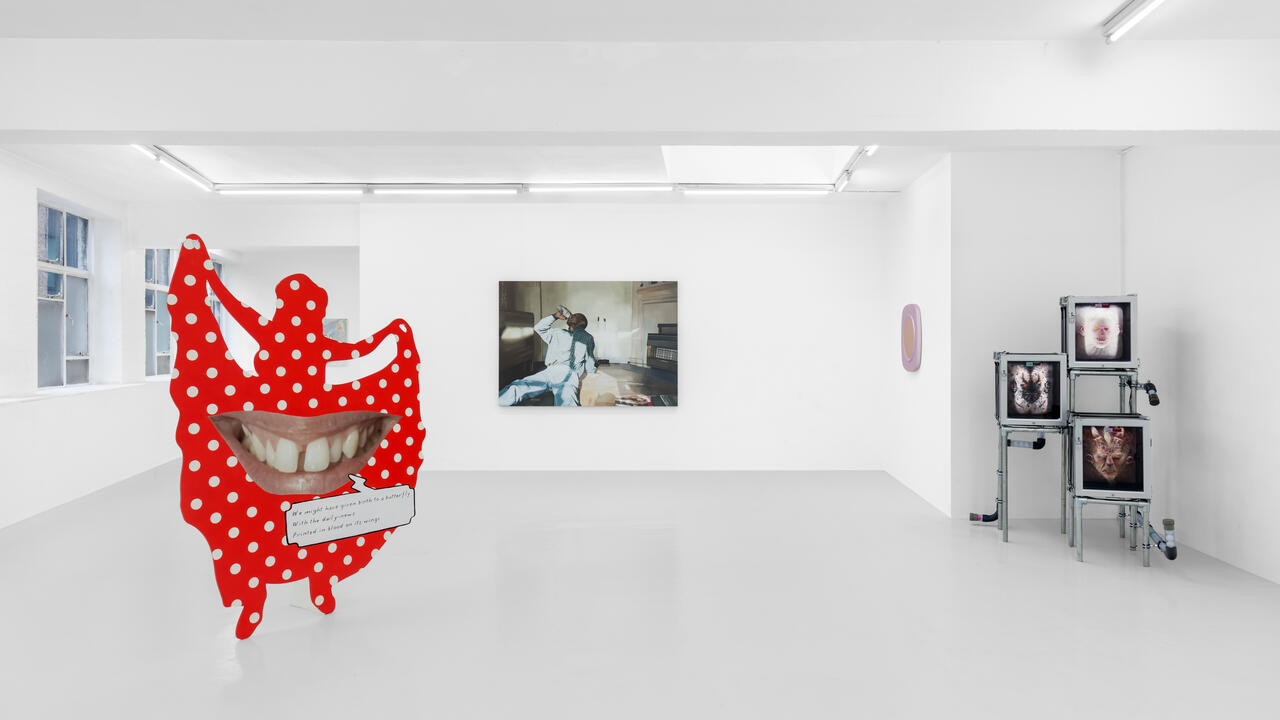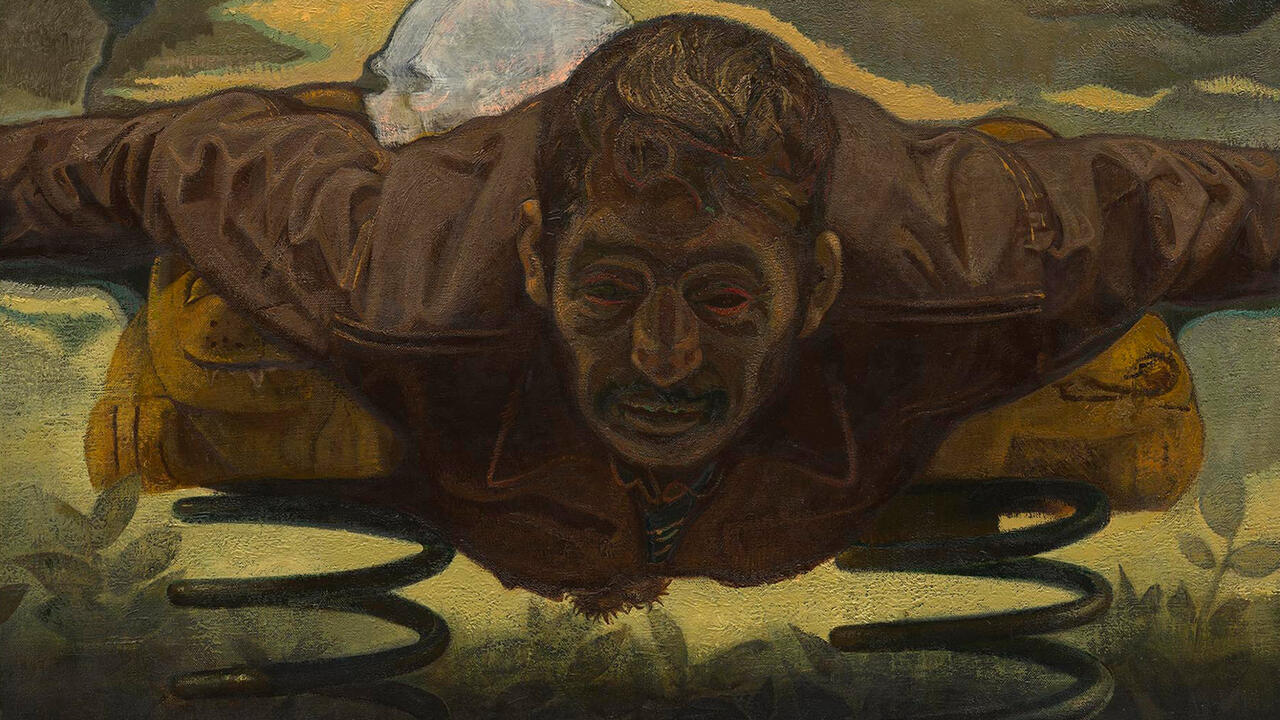Tim Rollins and K.O.S.
Maureen Paley, London, UK
Maureen Paley, London, UK

Painting on book pages has been the trademark technique of Tim Rollins and K.O.S. since they started working together in the early 1980s. Rollins, then a young teacher in an underprivileged South Bronx neighbourhood, started an after-school art group for kids. Over three decades, many of the 100 or so self-proclaimed ‘Kids of Survival’ have come and gone, but a core group, now adults, still works with Rollins, who was also one of the co-founders of the activist art collective Group Material in 1979.
The six works on show at Maureen Paley incorporate pages from texts including the Brothers Grimm’s ‘Rumpelstiltskin’ (1812) and Franz Schubert’s score for ‘Gretchen at the Spinning Wheel’ (1814), a parable for our debt-ridden times in which a young girl learns the cost of promising to spin straw into gold. On two canvases papered with pages from George Orwell’s allegory Animal Farm (1945) and covered with a white acrylic wash, the artists have painted black watercolour images of chimeras that combine the body of bats with the heads of Vladimir Putin and of Kim Jong-un (Animal Farm – Putin [after Orwell] and Animal Farm – Kim Jong-un [after Orwell], all works 2017). These are the latest in a series of caricatures of political leaders started in the late 1980s – it’s worth looking them up to see on-the-nose renditions of Ronald Reagan as a turtle and Margaret Thatcher as a goose. The early works now feel gently satirizing, reminiscent of 19th-century French caricaturist Honoré Daumier’s bubble-headed politicians. By contrast, the contemporary atmosphere of geopolitical terror makes the new paintings feel more disturbing than amusing.

In Dracula – Jonathan Harker’s Journal (after Bram Stoker) – a triptych of pages from Stoker’s 1897 gothic novel, which hangs between the Kim and Putin works – the paper’s surface is afflicted by a curious deposit, as though gusting winds have formed a drift of white powder pigment down the middle of the page, rendering the centre of the text all but unreadable. The analogy set up between Putin or Kim and Dracula seems plausible: both leaders are perceived as predatory demagogues who suck the lifeblood out of their people, what Harker refers to as ‘monsters’ in the book. But it also confronts us with a glaring absence in the trilogy of bad news figures: Donald Trump.
In Stoker’s novel, Dracula and his vampires infect innocent victims, leaving them undead and compelling them to pass on their monstrous affliction. His story harbours the notion that Dracula was himself once an innocent human and still has the capacity for human emotions. Showing Kim and Putin in a state of becoming animal seems to absolve them from absolute responsibility for their human misdemeanours. Depicted thus, can they be wholly to blame for their actions, or are they the victims of some ideological disease? Like Dracula and his victims, the Kim and Putin bat figures are somehow undead, or ‘undecidable’, to use the term preferred by philosopher Jacques Derrida, who was inspired by zombies and monsters.

Art made by collectives tends to raise the questions: Whose idea was it? Who did what? How did they do it? By incorporating literature and music into their works, Rollins and K.O.S. make a powerful argument that education is a promising route out of darkness and that the stories and ideas of the past can help us better understand the present. But their greatest work is the community that grew out of an extra-curricular activity and into what the artists describe as a ‘familial relationship’. It is a shortcoming of contemporary art exhibitions that such relationships are barely discernible in the show itself: this is the unfortunate disparity between ‘work’ as a verb and as a noun.
Main image: Tim Rollins and K.O.S., Animal Farm - Kim Jong-Un (after Orwell), 2017, acrylic and watercolor on book pages on linen, 51 x 66 cm, installation view, Maureen Paley, London. Courtesy Maureen Paley, London, © Tim Rollins and K.O.S.









